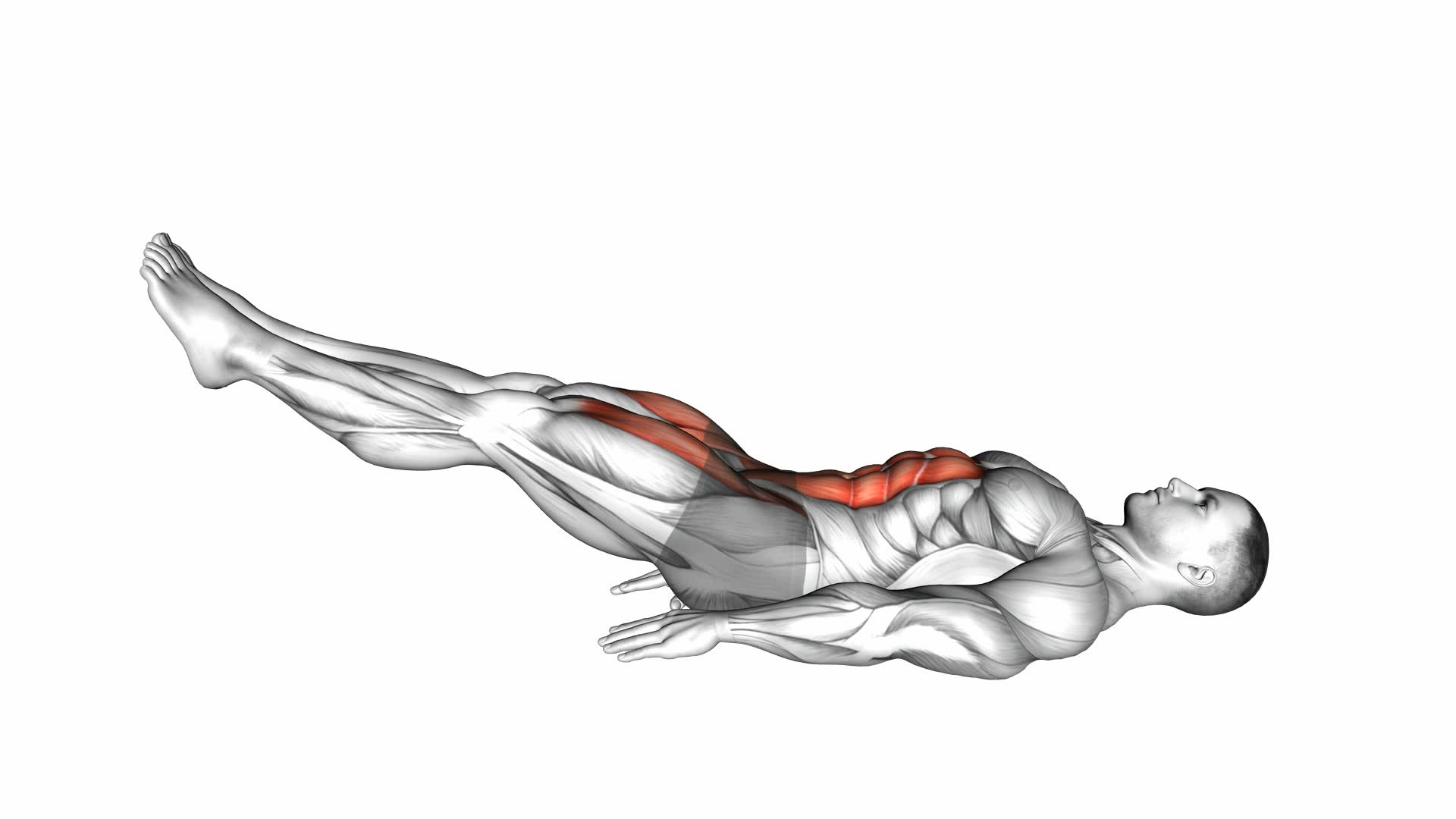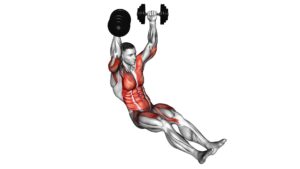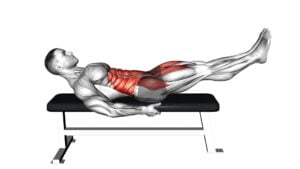Lying Leg Raise and Hold – Video Exercise Guide & Tips

Looking to strengthen your core and improve your lower body strength? Look no further than the lying leg raise and hold exercise!
Watch This Exercise Video
This video exercise guide and tips will show you the proper form and execution, common mistakes to avoid, variations and modifications, and tips for maximizing your results.
Get ready to feel the burn and achieve your fitness goals with this effective exercise. Let's dive in and get those legs raised and held for maximum results!
Key Takeaways
- Lying leg raise and hold activates and strengthens leg muscles, improving overall stability and posture.
- Proper form and execution include keeping the lower back pressed into the mat, engaging abdominal muscles, and controlling the movement.
- Common mistakes to avoid include allowing the lower back to lift off the mat, using momentum instead of engaging the abdominals, and arching the back or lifting the hips.
- Variations and modifications include using ankle weights or resistance bands, trying side lying leg raises, and customizing the exercise based on fitness level and goals.
Benefits of Lying Leg Raise and Hold
The lying leg raise and hold exercise offers numerous benefits for your lower body strength and stability. This exercise is a great way to activate and strengthen your leg muscles, particularly the hip flexors, quadriceps, and hamstrings. By lifting your legs off the ground and holding them in the air, you engage these muscles, helping to improve their strength and endurance.
In addition to targeting the leg muscles, the lying leg raise and hold also helps to improve core strength. As you lift your legs, you must engage your abdominal muscles to stabilize your lower back and pelvis. This activation of the core muscles not only enhances your overall stability but also contributes to better posture and spinal alignment.
By regularly incorporating the lying leg raise and hold into your fitness routine, you can expect to see improvements in your lower body strength, stability, and muscle tone. This exercise is particularly beneficial for athletes and individuals looking to enhance their athletic performance.
Now that you understand the benefits of the lying leg raise and hold, let's move on to discussing the proper form and execution of this exercise.
Proper Form and Execution
To perform the lying leg raise and hold exercise with proper form and execution, follow these steps.
- Lie flat on your back on a mat or a comfortable surface. Keep your legs extended and your arms by your sides. Engage your core muscles by drawing your belly button towards your spine.
- Slowly lift both legs off the ground, ensuring that your lower back stays pressed into the mat. Keep your legs straight and avoid any bending at the knees.
- Once your legs are raised, hold this position for a few seconds, focusing on keeping your abdominal muscles engaged.
- To lower your legs, slowly and with control, lower them back down to the starting position. Repeat the exercise for the desired number of repetitions.
When performing the lying leg raise and hold exercise, it's important to pay attention to some common errors and technique tips.
- One common error is allowing your lower back to lift off the mat during the leg raise. To avoid this, focus on keeping your core muscles engaged and your lower back pressed into the mat throughout the exercise.
- Another common error is using momentum to lift your legs. Instead, focus on using your abdominal muscles to control the movement and lift your legs with control.
- Lastly, be mindful of your breathing throughout the exercise. Inhale as you lower your legs and exhale as you raise them.
Now that you know the proper form and execution of the lying leg raise and hold exercise, let's move on to the next section to learn about common mistakes to avoid.
Common Mistakes to Avoid
To avoid common mistakes during the lying leg raise and hold exercise, focus on maintaining proper form and technique. This exercise can be challenging, but with the right technique, you can maximize its benefits while minimizing the risk of injury.
One common mistake to avoid is using momentum to lift your legs instead of relying on your abdominal muscles. Remember to engage your core and use your lower abs to lift your legs slowly and controlled.
Another mistake is arching your back or lifting your hips off the ground. Keep your lower back pressed firmly against the floor and maintain a neutral spine throughout the exercise.
It's also important to avoid swinging or rocking your legs during the movement. Instead, keep your legs straight and use your abs to lift them up and down in a controlled manner.
Lastly, make sure to breathe throughout the exercise. Holding your breath can cause tension and affect your form.
Variations and Modifications
To add variety and challenge to your lying leg raise and hold exercise, try incorporating different variations and modifications.
There are several variation options you can explore to target different muscle groups and intensify your workout. One option is to perform the exercise with ankle weights or resistance bands to increase the resistance and work your muscles even harder.
Another variation is the side lying leg raise, where you lie on your side and lift your top leg straight up. This targets your outer thigh muscles and helps to improve hip stability.
If you're a beginner or find the exercise too challenging, there are modifications you can make to gradually build strength and improve your form. One modification is to bend your knees slightly and raise your legs to a comfortable height. This reduces the load on your lower back and makes the exercise more manageable.
Another modification is to perform the exercise with your hands supporting your lower back. This provides additional stability and support, allowing you to focus on engaging your core and leg muscles.
By incorporating these variation options and modifications for beginners, you can customize the lying leg raise and hold exercise to suit your fitness level and goals.
Now let's move on to the next section where we'll discuss some tips for maximizing your results.
Tips for Maximizing Your Results
For the best results, focus on maintaining proper form and engaging your core throughout the entire lying leg raise and hold exercise. This will ensure that you're targeting the right muscles and maximizing the benefits of this exercise.
Here are some tips to help you get the most out of your workout:
- Effective breathing techniques: Remember to breathe in a controlled manner throughout the exercise. Inhale as you lower your legs and exhale as you lift them up. This will help you maintain stability and control, while also providing oxygen to your muscles for optimal performance.
- Incorporating resistance bands: To add an extra challenge to your lying leg raise and hold, try using resistance bands. Simply loop the band around your ankles and perform the exercise as usual. The resistance provided by the band will engage your muscles even more, helping you to build strength and endurance.
- Gradually increase difficulty: As you become more comfortable with the lying leg raise and hold, you can increase the difficulty level by extending your legs further away from your body or by holding the raised position for longer periods of time. This progressive overload will help you continue to challenge your muscles and see continued progress.
Frequently Asked Questions
How Many Sets and Reps Should I Do When Performing the Lying Leg Raise and Hold Exercise?
When performing the lying leg raise and hold exercise, it's important to consider the repetition range that suits you best. The ideal number of sets and reps may vary depending on your fitness level and goals.
Incorporating this exercise into your routine can bring various benefits, such as strengthening your core and hip flexors, improving stability, and enhancing overall lower body strength.
Remember to consult with a fitness professional to determine the appropriate repetition range for optimal results.
Can I Perform the Lying Leg Raise and Hold Exercise if I Have a Lower Back Injury?
If you have a lower back injury, it's important to be cautious when considering the lying leg raise and hold exercise. This exercise puts strain on the lower back, which may exacerbate your injury.
To modify the exercise, you could try performing it with bent knees or using a stability ball for support.
Alternatively, you can focus on other exercises that target your abdominal muscles without putting stress on your lower back, such as planks or seated knee tucks.
Is It Necessary to Use a Mat or Towel for Added Comfort During the Lying Leg Raise and Hold Exercise?
Using a mat or towel during the lying leg raise and hold exercise can provide several benefits.
It adds a layer of cushioning, which helps to reduce any discomfort or pressure on your lower back or tailbone.
The mat or towel also provides a non-slip surface, ensuring that you have a stable foundation for performing the exercise.
If you don't have a mat or towel, you can try using a folded blanket or even a carpeted floor as alternatives for added comfort.
Can I Perform the Lying Leg Raise and Hold Exercise if I Have Weak Abdominal Muscles?
If your abdominal muscles are weak, there are modification options available for the lying leg raise and hold exercise.
You can start by performing the exercise with bent knees instead of straight legs. This will reduce the strain on your abs and make it more manageable.
Additionally, there are alternative exercises you can try that target the same muscle groups, such as planks or seated leg lifts.
These exercises can help strengthen your abs gradually while avoiding excessive strain.
How Long Should I Hold the Raised Leg Position During the Lying Leg Raise and Hold Exercise?
When doing the lying leg raise and hold exercise, you may wonder how long to hold the raised leg position.
The duration of the hold can vary depending on your fitness level and goals.
Beginners can start with a shorter hold time, around 5-10 seconds, and gradually increase it as they get stronger.
Advanced variations of this exercise can involve holding the leg position for longer durations or adding weights.
Remember to always listen to your body and modify the exercise as needed.
Conclusion
Incorporating lying leg raise and hold exercises into your workout routine can bring numerous benefits, including increased core strength and improved stability. By maintaining proper form and avoiding common mistakes, you can make the most out of this exercise.
Additionally, exploring variations and modifications can help keep your routine challenging and prevent plateauing. Remember to follow these tips to maximize your results and achieve your fitness goals.
So, why wait? Start incorporating lying leg raise and hold exercises into your fitness regimen today!

Author
Years ago, the spark of my life’s passion ignited in my mind the moment I stepped into the local gym for the first time. The inaugural bead of perspiration, the initial endeavor, the very first surge of endorphins, and a sense of pride that washed over me post-workout marked the beginning of my deep-seated interest in strength sports, fitness, and sports nutrition. This very curiosity blossomed rapidly into a profound fascination, propelling me to earn a Master’s degree in Physical Education from the Academy of Physical Education in Krakow, followed by a Sports Manager diploma from the Jagiellonian University. My journey of growth led me to gain more specialized qualifications, such as being a certified personal trainer with a focus on sports dietetics, a lifeguard, and an instructor for wellness and corrective gymnastics. Theoretical knowledge paired seamlessly with practical experience, reinforcing my belief that the transformation of individuals under my guidance was also a reflection of my personal growth. This belief holds true even today. Each day, I strive to push the boundaries and explore new realms. These realms gently elevate me to greater heights. The unique combination of passion for my field and the continuous quest for growth fuels my drive to break new ground.







